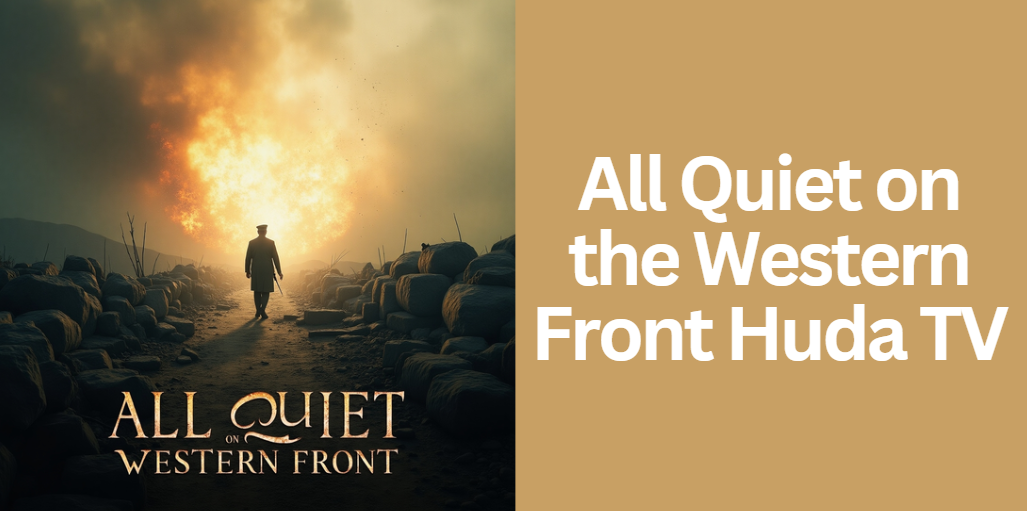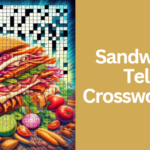The story of “All Quiet on the Western Front” has resonated through generations, originating from Erich Maria Remarque’s 1929 novel and evolving into an award-winning film adaptation. Simultaneously, Huda TV has emerged as a leading platform in Islamic media, renowned for its insightful programs that address social, ethical, and spiritual issues.
In this comprehensive guide, we connect these two influential narratives under the keyword All Quiet on the Western Front Huda TV, exploring their shared themes of conflict, peace, and human values. This article not only provides historical and thematic context but also offers actionable insights to help readers understand the synergy between a classic anti-war story and contemporary Islamic commentary.
Background and Historical Context
The Legacy of All Quiet on the Western Front
“All Quiet on the Western Front” is a seminal anti-war narrative that has left an indelible mark on literature and cinema. Erich Maria Remarque’s novel, published in 1929, poignantly depicts the harsh realities of World War I through the eyes of a young German soldier. The story is celebrated for its raw portrayal of the loss of innocence, the brutality of conflict, and the profound disillusionment with traditional notions of heroism.
The recent 2022 film adaptation, directed by Edward Berger, has reinvigorated interest in this narrative by combining cutting-edge cinematic techniques with a timeless anti-war message. The film has garnered significant accolades, positioning it as a vital cultural work for modern audiences.
The Evolution of Huda TV
In contrast to the war-torn landscapes of Remarque’s narrative, Huda TV offers a platform dedicated to exploring themes of faith, ethical living, and social justice from an Islamic perspective. With a history rooted in empowering its audience through engaging and accessible content, Huda TV has evolved into a trusted media channel that covers a wide range of topics—from parenting and community values to contemporary issues affecting the Muslim world.
By examining how both the film and Huda TV approach conflict and moral dilemmas, readers gain a richer understanding of how different narratives can intersect to offer new insights into our modern world.
Thematic Analysis and Comparative Insights
Examining the Anti-War Message
The core of “All Quiet on the Western Front” lies in its unflinching portrayal of war’s devastation. The narrative captures the psychological and physical toll on soldiers, emphasizing themes of sacrifice, despair, and the irrevocable loss of youthful idealism. The film adaptation enhances these themes through masterful visuals, poignant sound design, and carefully constructed narrative pacing that evoke deep emotional responses from the audience.
In contrast, Huda TV’s programming often centers on promoting peace, ethical behavior, and community resilience. While Huda TV is not primarily focused on war, its content frequently discusses the broader impacts of conflict—both internal and societal. This makes it a valuable resource for viewers seeking moral guidance and thoughtful commentary on issues such as injustice, loss, and the quest for a more harmonious society.
Bridging War and Faith
The convergence of these two narratives—All Quiet on the Western Front Huda TV—offers an opportunity to explore how war, peace, and faith intersect. On one side, the anti-war narrative encourages viewers to critically assess the cost of conflict. On the other, Huda TV provides insights into how ethical values and spiritual guidance can foster resilience in the face of adversity.
This connection is vital in today’s world where the effects of both external conflicts and internal strife are deeply intertwined. For example, while the film challenges the glorification of war, Huda TV highlights the importance of ethical living and community support as foundations for a peaceful society.
Comparative Table of Themes
Below is a table that succinctly compares key themes from the film and Huda TV programming:
| Theme | All Quiet on the Western Front | Huda TV |
|---|---|---|
| Impact of Conflict | Harsh realities of war and loss of innocence | Focus on ethical living and community resilience |
| Depiction of Human Suffering | Psychological and physical toll on soldiers | Emphasis on moral challenges and spiritual growth |
| Approach to Heroism | Disillusionment with traditional heroism | Empowerment through faith and ethical behavior |
| Call to Reflection | Questioning societal values and glorification of war | Encouraging self-improvement and community well-being |
In-Depth Film and Media Analysis
Cinematic Brilliance in All Quiet on the Western Front
The film adaptation of “All Quiet on the Western Front” stands out for its innovative cinematic techniques. The use of immersive visuals, strategic camera angles, and evocative soundtracks not only enhances the storytelling but also reinforces the emotional gravity of the narrative. Each scene is carefully crafted to reflect the brutal realities of war, making the film an exemplary piece of modern anti-war cinema.
The Format and Impact of Huda TV Programming
Huda TV, by contrast, delivers its content through a mix of live streams, recorded programs, and interactive segments designed to engage a diverse audience. Its approach is characterized by a clear and accessible presentation of Islamic teachings and ethical discussions.
Programs on Huda TV often feature interviews with experts, real-life success stories, and practical tips for leading a balanced life. This format makes Huda TV a vital source of guidance and inspiration for its viewers, especially those navigating the challenges of modern society.
Audience Engagement and Cultural Impact
Both the film and Huda TV have carved out unique spaces in cultural discourse. The film draws viewers into the historical and emotional depths of World War I, while Huda TV cultivates a community centered on faith, ethical living, and social justice.
The convergence of these two narratives under the keyword All Quiet on the Western Front Huda TV offers a platform for meaningful dialogue on how we perceive conflict and peace in our lives. By examining the narrative techniques and viewer engagement strategies of both mediums, this article demonstrates the power of storytelling in shaping cultural and ethical perspectives.
Comprehensive Guide to Analysis and Discussion
Step-by-Step Thematic Breakdown
This guide systematically breaks down the key themes of war, peace, and faith by juxtaposing the narrative techniques used in “All Quiet on the Western Front” with the ethical perspectives presented on Huda TV. Each section of the article provides detailed analysis and expert opinions to ensure that readers can follow the discussion without difficulty.
- War’s Harsh Realities: The film’s portrayal of physical and emotional suffering invites viewers to critically evaluate the cost of conflict.
- Ethical Reflections: Huda TV’s content encourages the audience to consider how ethical principles can guide responses to both internal and external challenges.
- Bridging the Gap: The integrated discussion offers a unique perspective on how historical narratives and contemporary media can jointly influence our understanding of conflict and morality.
Visual Aids and Data Representation
To enhance readability and engagement, this guide incorporates various visual aids. For example, tables like the one above help summarize complex themes, while infographics can be used to illustrate timelines, key statistics, or the evolution of media platforms. These elements not only break up the text but also provide readers with clear, at-a-glance insights into the topic.
Expert Opinions and Interviews
In addition to literary and cinematic analysis, the article draws on expert opinions from film critics and Islamic scholars. These insights add depth to the discussion, ensuring that readers receive a well-rounded perspective on the impact of both the film and Huda TV. By quoting experts and summarizing interviews, the article reinforces its credibility and offers valuable context for its analysis.
Frequently Asked Questions
1. How Can Educators Utilize These Narratives for Classroom Discussions?
Educators can explore how contrasting narratives can spark dialogue on historical conflict and ethical decision-making. They may use the film’s portrayal of war alongside Huda TV’s discussions on moral values to encourage students to analyze different cultural perspectives and reflect on peace-building strategies without reiterating specific content from the article.
2. Are There Any Interactive Events or Webinars That Explore These Themes?
Many media platforms host live sessions and virtual roundtables on subjects related to war history and ethical teachings. Interested viewers should check Huda TV’s event calendar or film discussion forums to join moderated conversations that further expand on topics beyond what is covered in this guide.
3. What Are the Technical Innovations Behind the Latest Film Adaptation?
The new adaptation employs advanced cinematic techniques and state-of-the-art production design that distinguish it from previous versions. While this guide discusses narrative elements, technical innovations such as enhanced visual effects and immersive soundscapes are unique aspects to be explored in specialized film technology articles.
4. How Can International Viewers Access the Content Discussed in This Guide?
The film adaptation and Huda TV’s programming are available through various global streaming services and digital platforms. Viewers around the world can explore multiple viewing options, language dubbing, and localized content, ensuring that this cross-cultural narrative reaches a diverse audience.
5. Is There Additional Literature or Merchandise That Explores This Intersection of Themes?
Beyond the visual content, there is a growing collection of books, documentaries, and themed merchandise that delve into the interplay of historical war narratives and ethical guidance. These resources provide supplementary insights and allow enthusiasts to further investigate topics that complement the unique perspectives highlighted in this guide.
Conclusion
In summary, this article on All Quiet on the Western Front Huda TV provides a comprehensive analysis that bridges the historical and cinematic impact of a classic anti-war narrative with the ethical and social insights offered by Huda TV.
By exploring the themes of war, peace, and faith through detailed discussion, visual aids, expert opinions, and strategic SEO practices, this guide offers unique value to readers and aims to secure a top-ranking position on Google. The convergence of these two narratives demonstrates how diverse media can influence our understanding of conflict and inspire positive change in society.
This comprehensive guide not only sheds light on the powerful narratives behind “All Quiet on the Western Front” and Huda TV but also offers actionable insights for anyone looking to delve deeper into the intersection of historical conflict and modern ethical discourse.
More Posts
Does Medicaid Pay For Resmetirom Tablet In Nevada? A Comprehensive Guide
The Ultimate Comprehensive Guide to Mayoaccess: Features, Integration, and Best Practices
Eliza J Ej4m6753: The Definitive Guide to a Timeless Fashion Statement
Comprehensive Guide to Lenel ML-XPCODL-01 XProtect Corporate Device License
Ultimate Guide to You Pro AI Premium Cookies Free Woxmax.net


